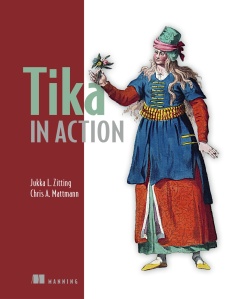There are many different ways and reasons for companies to develop their software as open source. Here's some brief commentary on the main approaches you'll encounter in practice.
0. Closed sourceWell, closed source is obviously not open, but I should mention it as not all software can or should be open. The main benefit of closed source software is that you can sell it. If you are working for profit, then you should only consider open sourcing your software if the benefits of doing so outweigh the lost license revenue.
1. Open releasesAlso known as code drops. You develop the software internally, but you make your release available as open source to everyone who's interested. Allows you to play the "open source" card in marketing, and makes for a great loss leader for a "pro" or "enterprise" version with a higher price tag. And no changes are needed from more traditional closed source development processes. Unfortunately your users don't have much of an incentive to get involved in the development unless they decide to fork your codebase, which usually isn't what you'd want.
2. Open developmentMaking it easy for your users to get truly involved in your project requires changes in the way you approach development. You'll need to open up your source repositories, issue trackers and other tools, and make it easy for people to interact directly with your developers instead of going through levels support personnel. Do that, and you'll start receiving all sorts of contributions like bug reports, patches, new ideas, documentation, support, advocacy and sales leads for free. You can even allow trusted contributors to commit their changes directly to your codebase without losing control of the project.
3. Open communityControl, or the illusion of it, is a double-edged sword. If you're the "owner" the project, why should others invest heavily in developing or supporting "your" code? To avoid this inherent limitation and to unlock the full potential of the open source community, you'll need to let go of the idea of the project being yours. Instead you're just as much a user and a contributor to the project as everyone else, with no special privileges. The more you contribute, the more you get to influence the direction of the project. This is the secret sauce of most truly successful and sustainable open source projects, and it's also a key ingredient of the
Apache Way.
So what's the right way?There's no single best way to do open (or closed) source, and the right model for your project depends on many factors like your business strategy and environment. The right model can even vary between different codebases within the same company. For example in the "open core" model you increase the level of innovation in and adoption of your core technologies by open sourcing them (or using existing open source components), but you make money and maintain your competitive edge through closed source add-ons or full layers on top of the open core. This is the model we've been using quite successfully at
Day (now a part of
Adobe).
If you've decided to go open source and you don't have a strong need to maintain absolute control over your codebase (like I suppose
Oracle now has over the
OpenJDK!), I would recommend going all the way to the open community model. It can be a tough cultural change and often requires changes in your existing development processes and practices, but the payback can be huge. In military terms the community can act as a force multiplier not just for your developers, but also for the QA and support personnel and often even your sales and marketing teams!
If you're interested in pursuing the open community model as described above, the
Apache Incubator is a great place to start!
 "Just like Arthur Dent, who after inserting a Babel fish in his ear could understand Vogon poetry, a computer program that uses Tika can understand Microsoft Word documents." This is how Tika in Action, our book on Apache Tika, introduces it's subject. Download the freely available first chapter to read the the full introduction.
"Just like Arthur Dent, who after inserting a Babel fish in his ear could understand Vogon poetry, a computer program that uses Tika can understand Microsoft Word documents." This is how Tika in Action, our book on Apache Tika, introduces it's subject. Download the freely available first chapter to read the the full introduction.
